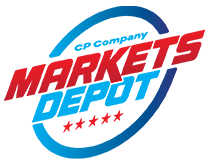Key Takeaway:
Outfitting a restaurant kitchen involves more than just buying equipment—it’s about layout, compliance, functionality, and long-term performance. Avoiding common setup mistakes can save you money, prevent delays, and ensure smoother operations from day one.
Why Kitchen Setup Mistakes Are So Costly
Opening a restaurant is already a high-pressure process. A single oversight—like ordering equipment that doesn’t fit, skipping sanitation stations, or using non-compliant gear—can lead to:
-
Failed health or fire inspections
-
Costly reorders or retrofits
-
Workflow inefficiencies that slow service
-
Shortened equipment lifespan due to poor use or placement
Planning your kitchen layout and supply list with strategy (not just urgency) is key to long-term success.
Mistake #1: Not Measuring Your Kitchen Correctly
It sounds obvious, but incorrect measurements are one of the most common—and expensive—mistakes.
Avoid:
-
Ordering equipment that can’t fit through doorways
-
Choosing appliances too large for your cookline
-
Blocking walkways or violating spacing codes
Pro Tip: Measure your kitchen layout multiple times, and leave clearance for ventilation, cleaning, and staff movement.
Mistake #2: Buying Residential or Non-Commercial Equipment
Even if it’s cheaper, residential-grade gear isn’t built for restaurant use. It will break faster, fail health inspections, and often void insurance coverage.
Only purchase:
-
NSF-certified equipment
-
Products labeled for commercial foodservice
-
Items designed to meet high-volume usage and sanitation requirements
MarketsDepotUSA.com stocks only commercial-grade gear—ensuring compliance and performance.
Mistake #3: Underestimating Storage Needs
New operators often focus on cooking and prep, but forget about where everything goes.
Plan for:
-
Dry storage (shelving and ingredient bins)
-
Refrigerated storage (reach-ins, prep tables)
-
Backstock and backup smallwares
-
Cleaning supply zones away from food
Efficient storage saves time, improves cleanliness, and supports inventory control.
Mistake #4: Overbuying Equipment You Don’t Need
While it’s tempting to fully stock every station, avoid buying equipment “just in case.” It wastes money and eats up valuable space.
Instead:
-
Build your list around your menu
-
Prioritize multi-use equipment (e.g., combi ovens, modular prep tables)
-
Consider leasing rarely used specialty equipment
Mistake #5: Ignoring Workflow and Kitchen Flow
Your layout should support natural movement between prep, cook, hold, and clean zones.
Avoid layouts that:
-
Cross dirty dishes with clean food
-
Force staff to double back or overlap
-
Create dead ends or single-person bottlenecks
Design your kitchen for efficiency and safety, not just equipment fit.
Mistake #6: Skipping Sanitation and Compliance Equipment
Health inspectors look for:
-
Dedicated handwashing sinks
-
Proper dishwashing setups (3-compartment or dishwasher)
-
Color-coded cutting boards
-
Thermometers and sanitizer test strips
Don’t make sanitation an afterthought—it’s required from day one.
Mistake #7: Buying Without Planning for Utilities
Before ordering major equipment, confirm:
-
Electrical requirements (voltage, phase)
-
Gas hookups and BTU ratings
-
Water line availability and drainage
-
Ventilation needs and fire suppression compatibility
Many restaurants delay opening because a fryer or oven can’t be installed due to overlooked utility limitations.
Mistake #8: Forgetting the Smallwares
Your kitchen won’t run without the little things: ladles, scoops, spatulas, containers, trays, and towels. New owners often scramble last-minute for essentials that weren’t on the original equipment list.
Use a checklist or order a starter smallwares kit from MarketsDepotUSA.com to cover your bases.
Mistake #9: Failing to Plan for Growth
Outfitting for today’s volume without considering future expansion leads to costly upgrades. Choose equipment that:
-
Offers modularity or scalability
-
Can be stacked or expanded later
-
Matches the next phase of your concept
This is especially important for refrigeration, prep space, and cookline configurations.
Final Thoughts: Set Your Kitchen Up for Long-Term Success
Avoiding these common mistakes doesn’t just save money—it builds a foundation for smooth operations, faster service, and a kitchen your staff can trust. Every item should serve a purpose, fit your workflow, and meet health code standards.
Need help planning your kitchen right the first time?
Explore expert-vetted equipment, smallwares kits, and layout-ready solutions at MarketsDepotUSA.com, or reach out for custom recommendations based on your space and menu.
